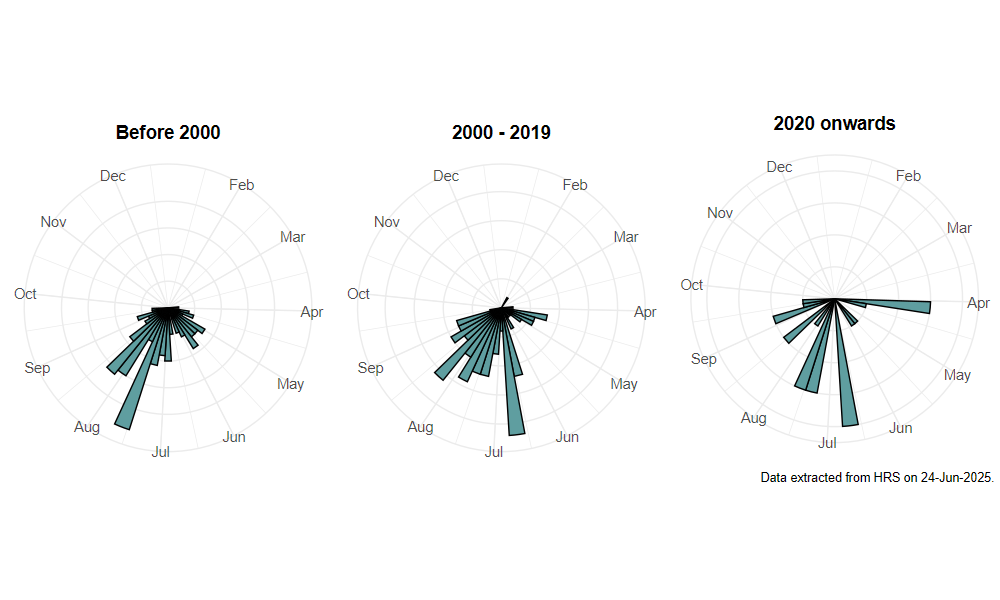Eupeodes bucculatus (Rondani, 1857)
Identification
Identification difficulty = 4. ![]()
![]() according to Ball & Morris, 20241
according to Ball & Morris, 20241
Synonymy
Syrphus latilunulatus Collin in Coe(1953)2, Metasyrphus latilunulatus (Collin) in Stubbs & Falk (1983)3.
Biology
The larva is aphidophagous and has been found on Creeping Thistle Cirsium arvense. Adult requirements are little known, but most records refer to conifer woods, with acid heathlands and wetlands also mentioned. It has been found visiting yellow composites, spurges Euphorbia sp., Bog Asphodel Narthecium ossifragum, sallows Salix sp., Rowan Sorbus aucuparia and chickweeds Stellaria sp. and has also been recorded from a garden Malaise trap.
Flight period
The following plots show the number of unique records per week excluding those reported to be of immature stages.

Status
Was listed as 'Notable' by Falk, 19914, but dropped from this status by Ball & Morris, 20145 who consider it LOWER RISK.
Distribution
Records are few and widely scattered; misidentifications are a problem, and it may be overlooked amongst large numbers of similar black and yellow hoverflies. There is a possibility that this could be a rare migrant/vagrant. Large scale movements apparently occur out of Scandinavia in August/September. Most records are from southern and central England with a few scattered records north to Sutherland.

Trends
The following plots show the Frescalo TFactor vs year and a map of the rescaled frequency (all records) for the species.
-
Ball, S., & Morris, R. (2024). Hoverflies of Britain and Ireland. WILDGuides (3rd ed.). Oxford: Princeton University Press. ↩
-
Coe, R. (1953). Diptera: Syrphidae. Handbooks for the Identification of British Insects, 10(1), 1–98. ↩
-
Stubbs, A., & Falk, S. (1983). British Hoverflies: An Illustrated Identification Guide (1st ed.). Reading: BENHS. ↩
-
Falk, S. (1991). A review of the scarce and threatened flies of Great Britain. ( No. 39). Research and Survey in Nature Conservation (pp. 1–194). Peterborough: NCC. ↩
-
Ball, S., & Morris, R. (2014). A review of the scarce and threatened flies of Great Britain. Part 6: Syrphidae. ( No. 9). Species status (pp. 1–130). Peterborough: JNCC. ↩